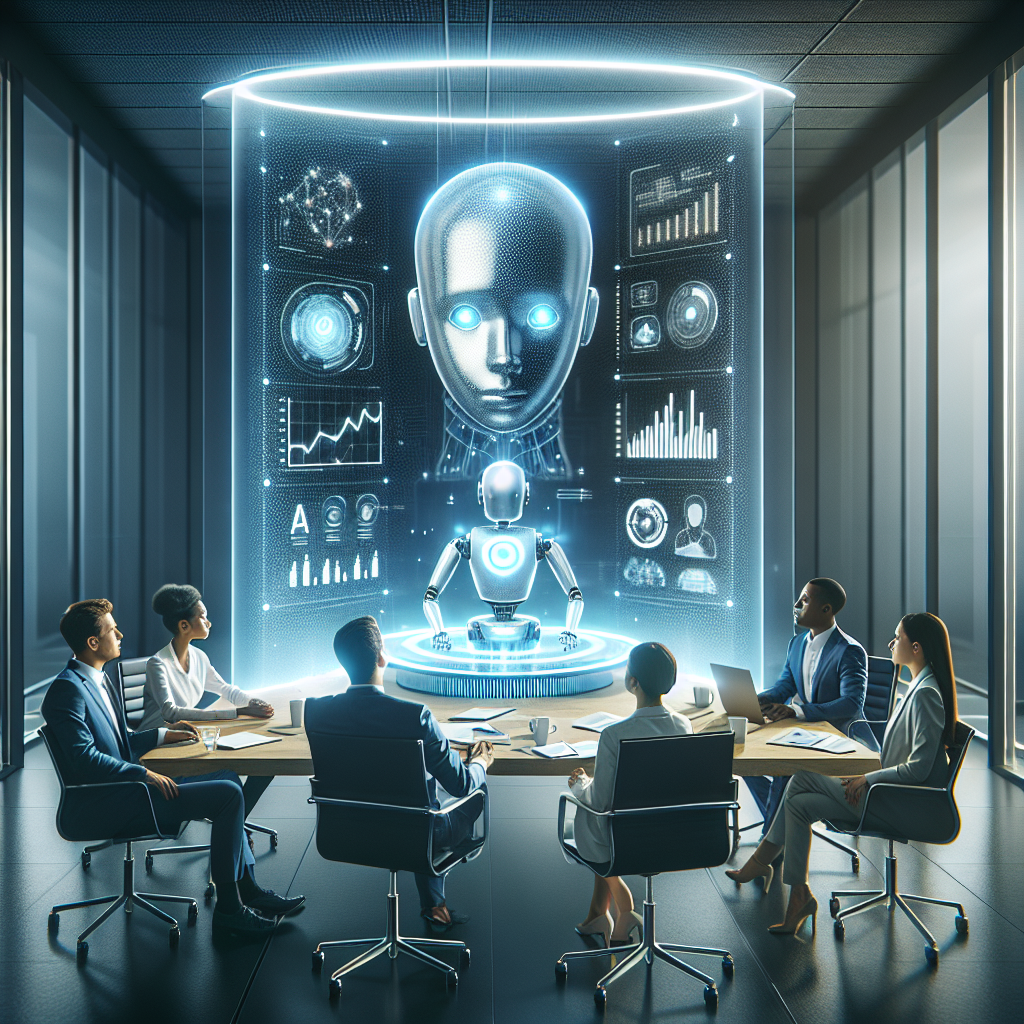In recent years, the conversation surrounding artificial intelligence (AI) has shifted dramatically. No longer just a tool for automating repetitive tasks, AI is evolving into a collaborative partner in the workplace—especially in white-collar sectors. This article explores the future of AI in professional environments, emphasizing collaboration over mere automation. We’ll delve into how AI enhances human capabilities, the potential benefits and challenges, and the transformative approaches organizations can adopt for a harmonious workplace.
Table of Contents
- Introduction
- The Evolution of AI: From Automation to Collaboration
- How AI Enhances White-Collar Work
- 3.1 Decision-Making Support
- 3.2 Increased Efficiency
- 3.3 Personalized Insights
- Challenges in AI Collaboration
- 4.1 Trust and Transparency
- 4.2 Skill Gaps
- Strategies for Successful AI Integration
- 5.1 Continuous Learning Culture
- 5.2 Emphasis on Human-AI Interaction
- Case Studies: Successful AI Integration
- Conclusion
- References
1. Introduction
The business landscape is undergoing a profound transformation facilitated by advancements in AI technologies. Contrary to fears about job displacement, experts advocate for a more nuanced perspective: AI will augment human work rather than replace it. In this age of “collaborative intelligence,” organizations can leverage AI’s capabilities to empower workers, enhance productivity, and drive innovation.
2. The Evolution of AI: From Automation to Collaboration
Historically, AI’s role was largely limited to automation, streamlining tasks such as data entry and basic reporting. However, the focus has shifted to developing systems that collaborate with humans. This involves leveraging AI not just for repetitive tasks, but as a partner that helps in complex problem-solving and decision-making.
According to a study by McKinsey & Company, AI will contribute $13 trillion to the global economy by 2030, emphasizing its pivotal role in enhancing productivity across sectors. This report underlines a significant trend: organizations that integrate AI effectively will outperform their competitors.
3. How AI Enhances White-Collar Work
3.1 Decision-Making Support
One of the most compelling advantages of AI in the workplace is its ability to provide valuable insights to support decision-making. Machine learning algorithms analyze vast amounts of data, offering recommendations and forecasts that help professionals make informed choices.
For instance, AI-driven analytics tools can predict market trends by analyzing social media sentiment and consumer behavior. This capability allows businesses to react swiftly to changes, staying ahead of competitors.
3.2 Increased Efficiency
AI systems excel at handling repetitive and time-consuming tasks, freeing up human workers to focus on higher-level activities. By automating administrative functions such as scheduling, invoice processing, and report generation, employees can devote their talents to creative and strategic tasks.
Research from PwC indicates that AI could increase productivity in the workforce by up to 40%. This increase is not merely a number; it translates into employees having more time for innovation, collaboration, and problem-solving.
3.3 Personalized Insights
AI has the ability to analyze individual and organizational behaviors, offering personalized insights that lead to tailored solutions. For example, customer relationship management (CRM) tools enhanced with AI can suggest next-best actions based on past interactions.
This customization improves service levels and enhances client satisfaction—essential elements in today’s competitive business environment.
4. Challenges in AI Collaboration
Despite the promising future of AI-human collaboration, several challenges must be addressed.
4.1 Trust and Transparency
For AI to be effective in a collaborative setting, users must trust these systems. A lack of transparency can lead to skepticism and resistance. Organizations must ensure that AI decision-making processes are clear and explainable, fostering trust among users.
4.2 Skill Gaps
As AI technologies evolve, there’s a growing need for skills that complement these new tools. Workers may require training in data analysis, machine learning, and AI ethics to ensure they can work effectively alongside AI systems. Organizations need to invest in continuous learning opportunities to bridge these gaps.
5. Strategies for Successful AI Integration
5.1 Continuous Learning Culture
Establishing a continuous learning culture is vital for organizations looking to harness AI effectively. This involves offering training programs and encouraging employees to embrace lifelong learning. Employees should feel empowered to explore new tools and ask questions about AI systems.
5.2 Emphasis on Human-AI Interaction
Fostering an environment where AI serves as a collaborator rather than a replacement requires emphasizing human-AI interaction. Organizations should design workflows that require collaboration between human workers and AI systems, highlighting each party’s strengths.
6. Case Studies: Successful AI Integration
Organizations worldwide are embracing AI as a collaborative partner. Here are two noteworthy examples:
-
Salesforce: The customer relationship management platform integrates AI through its Einstein tool, which provides predictive analytics and insights to enhance sales strategies. Sales teams using Einstein report increased productivity and better customer relationships.
-
IBM’s Watson: Used in healthcare, Watson assists doctors in diagnosing diseases by analyzing medical data. The system collaborates with healthcare professionals, providing support that enhances diagnosis and treatment decisions.
7. Conclusion
The future of work in the age of AI is not one of replacement but of collaboration. White-collar workers who leverage AI can enhance their capabilities, drive efficiencies, and foster innovation. By addressing challenges like trust and skills gaps, businesses can create a harmonious environment where humans and machines thrive together.
Investing in training and developing a culture that embraces continuous learning will be crucial in this collaborative future. As organizations embark on this journey, they will not only improve their productivity but also create a workplace that values the unique contributions of each individual.
References
- McKinsey & Company – The Future of Work: A Journey to 2030
- PwC – AI and the Workforce: The Future of Work
For additional insights on AI’s impact on business, check out our article on AI in Marketing.
